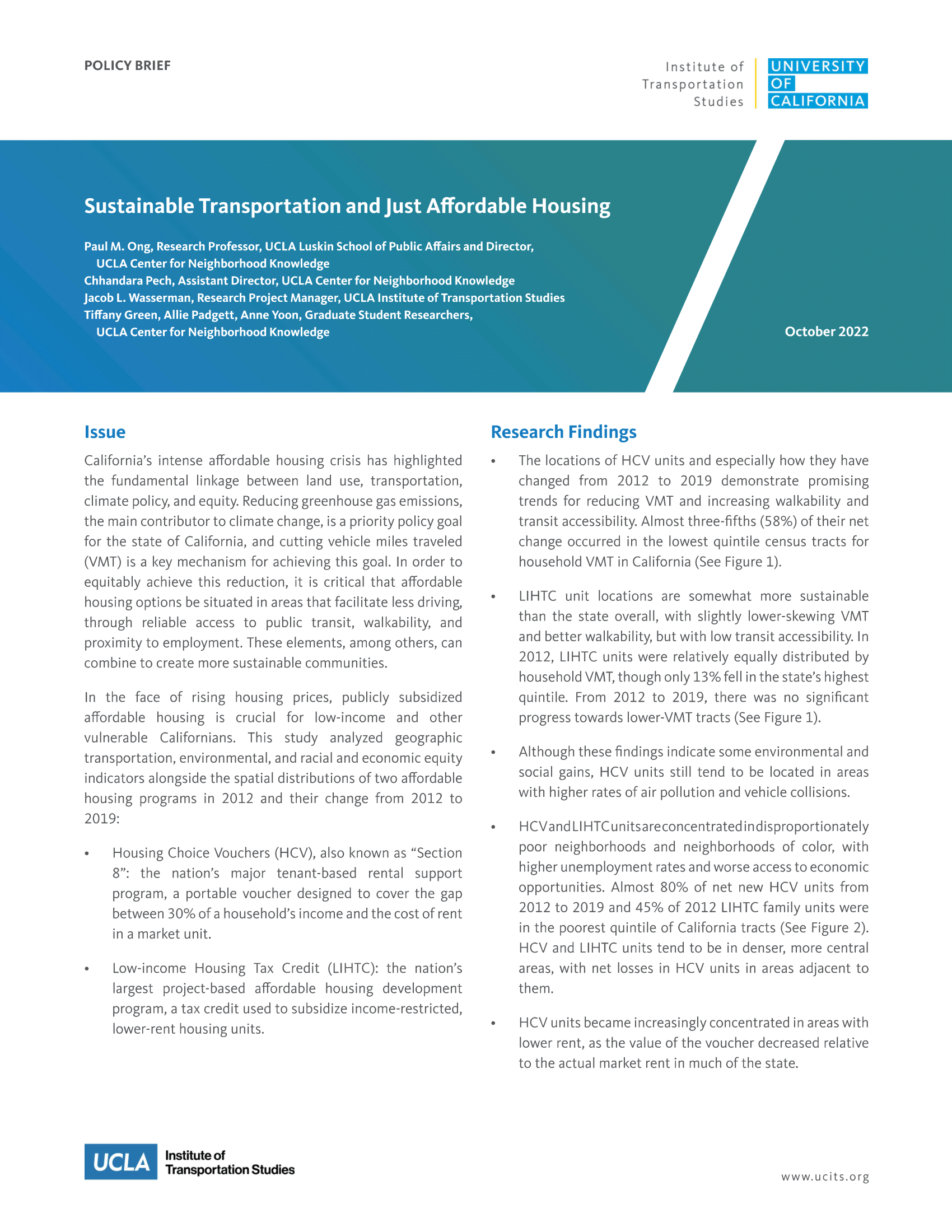Date: October 13, 2022
Author(s): Paul M. Ong, Chhandara Pech, Jacob L. Wasserman, Tiffany Green, Allie Padgett, Anne Yoon
Abstract
California’s intense affordable housing crisis has highlighted the fundamental linkage between land use, transportation, climate policy, and equity. Reducing greenhouse gas emissions, the main contributor to climate change, is a priority policy goal for the state of California, and cutting vehicle miles traveled (VMT) is a key mechanism for achieving this goal. In order to equitably achieve this reduction, it is critical that affordable housing options be situated in areas that facilitate less driving, through reliable access to public transit, walkability, and proximity to employment. These elements, among others, can combine to create more sustainable communities.
About the Project
This project examines the spatial distribution of tenant-based Housing Choice Voucher (Section 8) units and Low-income Housing Tax Credit units to understand whether geographic patterns and trends are consistent with climate change and equity goals. The analysis compares the location of HCV and LIHTC units in 2012 and net changes from 2012 to 2019 with a number of transportation, environmental, and racial and economic equity metrics. The change in HCV units from 2012 to 2019 shows promising trends for reducing vehicle miles traveled and increasing walkability and transit accessibility. LIHTC unit locations are, at best, somewhat more sustainable than the state overall, with slightly lower-skewing vehicle miles traveled and better walkability, though low transit accessibility. What environmental gains there were, though, come at the cost of higher exposure to pollution. HCV and LIHTC units are also concentrated in disproportionately low-income neighborhoods and neighborhoods of color, with worse access to economic opportunity. The findings reveal an inherent structural dilemma in whether the HCV and LIHTC programs are able to simultaneously achieve climate and equity goals.


